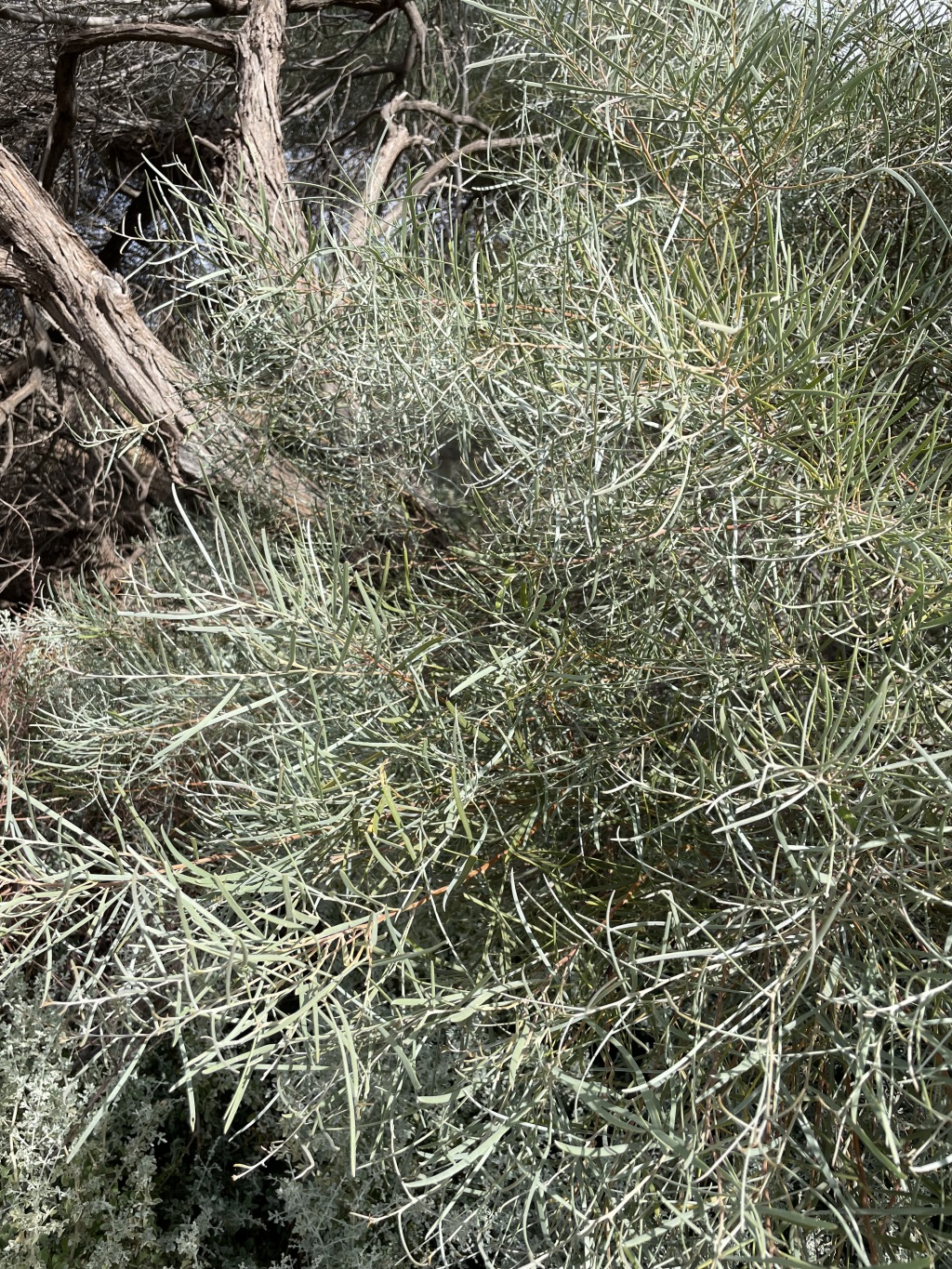Acacia loderi
Maiden NealieShrubs or trees, 3–15 m high, often suckering; branchlets terete with several ribs, with appressed, minute hairs, glabrescent. Phyllodes linear, 5–11 cm long, 1–2(–3.5) mm wide, straight to slightly curved, compressed to subterete, semi-rigid, tips sometimes curved, acuminate, innocuous, with appressed, minute hairs or glabrous; veins numerous, closely parallel, obscure. Racemes 2–6-headed, rachis minute, with appressed, minute hairs, or peduncles in axillary clusters; peduncles 4–7 mm long, with appressed, minute hairs and red resin-hairs intermixed; heads globular, 4–5 mm diam., 25–35-flowered, golden; bracteoles spathulate, not ciliate. Flowers 5-merous; sepals free; petals two-thirds united. Pods submoniliform, to 10 cm long, 2–5 mm wide, straight to slightly curved, chartaceous, smooth, sometimes with appressed, minute hairs; seeds longitudinal, elliptic, c. 4.5 mm long, glossy brown-black, fleshy funicle expanded at seed in small aril. Flowers c. Sep.
MuM, Wim, VRiv, MSB, RobP, MuF. Also SA, NSW. In Victoria, restricted to near Merbein and Nyah in the north-west, and near Pyramid Hill and Nathalia in the central north. It exists now as mostly remnant stands on or near private land.
Closely related to A. papyrocarpa. Some collections from the north-west of Victoria in the vicinity of Wood Wood have been referred to as 'A. sp. aff. papyrocarpa' and superficially there is much resemblance with that species. As presently interpreted, A. papyrocarpa does not extend farther east than the South Flinders Range in South Australia, and A. loderi differs by several flower and fruit characters. Most plants referred to 'A. sp. aff. sowdenii' by Court (in Willis 1973) can be accommodated within A. loderi, but it is possible that some are hybrids between this species and A. melvillei.
Although assigned here to Group 3, the inflorescence may have a minute rachis.
Entwisle, T.J.; Maslin, B.R.; Cowan, R.S.; Court, A.B. (1996). Mimosaceae. In: Walsh, N.G.; Entwisle, T.J., Flora of Victoria Vol. 3, Dicotyledons Winteraceae to Myrtaceae, pp. 585–658. Inkata Press, Melbourne.
 Spinning
Spinning


